Stock car racing used to be based on stock cars – production cars you could buy, modified to race.
Today, it’s the reverse.
The race cars are cars you can’t buy, with the production cars modified to look like the race cars.
Like the latest iteration of Toyota’s Camry sedan. The one you can buy is a front-drive car with an available V6 engine; the race car has a V8 engine driving the rear wheels – and rear doors that aren’t there.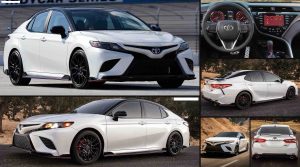
But now you can buy a Camry that looks like a race car – with a wing on the trunk, even.
Plus rear doors that aren’t stenciled on.
What It Is
The Camry is the best-selling mid-sized family sedan on the market. It comes with both four and six-cylinder engines and for the first time, a wing – if you order the new Toyota Racing Development (TRD) package.
Which also includes a racy-looking front end with a contrast-color chin spoiler, side-sill extensions and handling/braking upgrades over the stock Camry. Unfortunately for race fans, there’s no V8 option on the menu.
At least not yet.
But the V6 you can buy is actually pretty racy.
Especially because few of its immediate rivals even offer one anymore.
Prices start at $24,425 for the stock Camry L with a less racy four cylinder engine; Toyota now offers AWD as an option – something the race Camry doesn’t have. But you have to step up to the LE or SE trims to buy it and it’s only available with the four cylinder engine.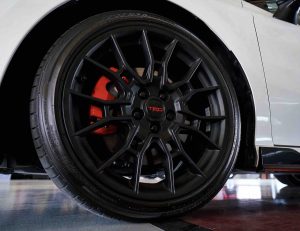
The V6 engine is standard with the XLE, XSE and the new TRD trims – all of which are front-drive only.
But only the TRD looks like a race car. It stickers for $31,170.
What’s New
In addition to the TRD package and the AWD option for four cylinder Camrys, AndroidAuto is now standard in all trims.
What’s Good
TRD package is more than just racy looks.
It’s much more practical than a race car.
Lots of potential to be racier.
What’s Not So Good
TRD’s visuals give away the racy performance V6 Camrys have always been capable of.
TRD’s V6 isn’t racier than the stock V6 in the XLE and XSE.
Chin spoiler is vulnerable to curb stops and dips in the road.
There’s no V8 on the menu, but the Camry still offers something that’s essentially nonexistent in the segment – a V6 engine.
Rivals like the Honda Accord, Mazda 6 and Nissan Altima are now four cylinder-only.
Their available fours are powered up by turbochargers, but they’re still much less powerful than the Camry’s optional 3.5 liter V6, which makes a class-best 301 horsepower vs. the Accord’s optional 2.0 liter turbocharged four, which makes 252 hp; the Nissan’s optional 2.0 liter, 248 hp turbocharged four and the Mazda 6’s optional turbocharged 2.5 liter four cylinder engine makes 250 hp . . . if you feed it premium unleaded. . . .
The TRD’s V6 makes no more horsepower, however, than the stock V6 you’ll find under the hood of other Camrys.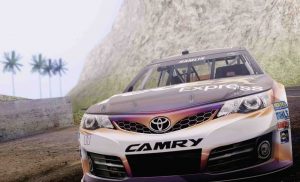
Still, it outperforms the fours in the class. A V6-equipped Camry – TRD or not – gets to 60 in the mid-high fives. It also gets 22 city/31 highway – much better mileage than the V8 not-so-stock race car. And the same mileage advertised by some of the the turbo four-cylinder-powered competition, like the Accord equipped with its top-dog 2.0 liter turbocharged engine (also 22 city, 32 highway). But it does have a racier six-speed manual transmission, which you can’t get in a Camry unless you get a Nextel Cup Camry.
And then you can’t get AC.
Or doors that open.
The rest of the Camry’s rivals – like the Mazda6 – are also automatic-only.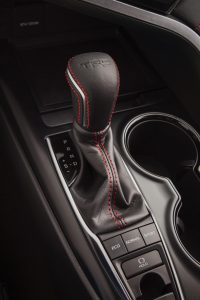
When equipped with its optional 2.5 liter turbocharged four, the Mazda rates 23 city and 31 highway – also about the same as the V6-equipped Camry. But the Mazda requires premium fuel to make its advertised peak power; on regular unleaded, the 2.5 liter turbo four makes 227 hp.
Both the Toyota’s V6 and the Honda’s optional turbo four are regular unleaded engines.
The Camry is also available with a 2.5 liter four cylinder engine – and even though it hasn’t got a turbo, it also makes the most standard power in the segment: 203 hp vs. the Nissan’s standard 2.5 liter, 188 hp four, Honda’s standard 1.5 liter turbocharged four, which makes 192 hp – and the Mazda 6’s standard 2.5 liter four (without the turbo) which only makes 187 hp.
And neither the Mazda nor the Honda offer their fours with all-wheel-drive. They are FWD-only.
Besides the Camry, the only other mid-sized family sedans in this class available with AWD are the Altima (which doesn’t offer a V6) and the about-to-be-discontinued (and also four cylinder-only) Ford Fusion.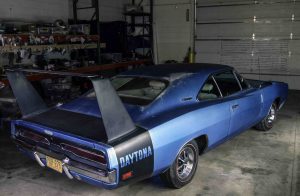
Which won’t be available for much longer.
If you’re willing to go up a notch in size – and price – you might want to check out the Dodge Charger sedan, which is mechanically closer to the not-so-stock cars going around the wide ovals. It is rear-drive and comes standard with a V6 – with a racy V8 available.
The six is also available with AWD – and the price so equipped ($33,595) is within range of the TRD’s base price.
But – its racy looks (and racier layout) notwithstanding, the V6-equipped Charger isn’t as actually racy as the V6/FWD Camry TRD. It needs about 6.7 seconds to get to 60 – not because its 3.6 liter V6 is weak (it makes 300 hp, almost as much as the Camry’s V6) but rather because it is much heavier than the Camry.
A stock (rear-drive) V6 Charger weighs 3,964 lbs. With AWD, the hunky sedan’s weight bloats to 4,205 lbs.
The V6 Camry is a featherweight in comparison – just 3,572 lbs. with the four. With AWD, the Camry’s weight drops to 3,475 lbs.
The Camry has always been a quick car when ordered with its available V6 – which is fundamentally the same V6 that you’d find under the hood of a Lexus GS350 (powering the rear wheels, in that case).
But it has never looked quick.
Which was a perk in that you could run quickly without being noticed – including by the insurance mafia. And in the event someone did notice – like a cop – the odds were better that you might be able to talk your way out of it by playing the Family Guy who didn’t realize how fast he was going, officer. It is harder to make that play when your car has a wing on the trunk, bright red powder-coated brake calipers poking through 19-inch lightweight alloy wheels and a chin spoiler that looks like something you’d see at Darlington.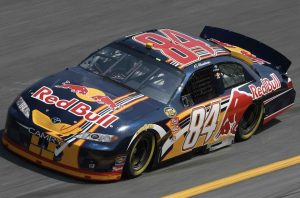
Nothing else in this class looks as fast as the new Camry. And it can back it up – though the TRD enhancements play no role in straight-line performance. A V6 XSE or XLE is just as quick to 60 and through the quarter-mile.
But the TRD Camry is quicker through the curves. It stops quicker, too – especially if you stop quickly, often. The larger (12.9 inch vs. 12 inch) rotors and grippier (40-series) “summer” tires see to that.
And in the curves, the chassis bracing, suspension tuning and the short-sidewall tires noticeably reduce body roll without noticeably (negatively) affecting the car’s civility.
It may look like a race car, but it still rides like a Camry.
There’s no race car bellow coming out of the twin TRD exhaust tips; just a slightly deeper tone. A more aggressive TRD exhaust system – perhaps with those neat-o baffles that pop open under full-throttle acceleration and bypass the mufflers entirely you can now get in several new performance cars – would have made it sound racier and possibly freed up another 10 horsepower or so, giving the TRD Camry an edge over the stock V6 Camry.
An open-element air cleaner. Maybe hotter cams, more lift – or at least, a more aggressive final drive ratio in the axle (all V6 Camrys use the same 2.56 gearing).
Still, there’s a lot of potential here – in a reversion of the role that stock cars used to play in relation to the actually stock production cars they were based on.
Back in the day, Dodge built 426 Street Hemi-equipped Chargers designed to become 200 MPH Chargers on the high ovals. The stock engines you could buy were modified into race car engines. Today, the stock car Camry doing 200 MPH laps around Daytona is powered by an engine built specifically for racing that isn’t based on any engine Toyota sells in a stock production car.
But that doesn’t mean you couldn’t modify the production Camry’s V6 to deliver race-car performance. In part because you have two more cylinders to work with than in rivals that have only four.
Which in a way, it already does.
A stock Camry – not even TRD’d – is quicker than classic muscle car heavyweights like the 1970 Dodge Charger Daytona 426 Hemi – which needed about 5.8 seconds to get to 60 MPH.
And now the TRD Camry has the looks to match – including the wing.
The Camry became a lot sportier looking when it was redesigned in 2018. Probably because Toyota knows the market for family cars is rapidly becoming the market for family crossovers – which are roomier-for-the-dollar.
Hence the more visual appeal – directed toward people who can indulge looks because maybe they haven’t got kids yet.
And now look at this one. In red- with the gloss black roof and matching chin and trunk spoiler. All it needs is a shaker hood scoop and a screaming chicken decal on its hood.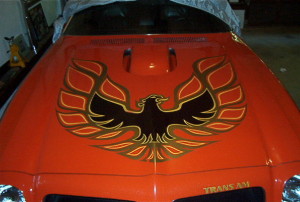
To look a little less obvious, consider a neutral color like white, which draws less attention to the chin spoiler – though there’s no hiding that wing.
Toyota is obviously proud of what the Camry can do and wants to make sure everyone knows about it. But it might be better to offer a Down Low version of the Camry – with the TRD mechanicals but sans the all-too-obvious visuals.
This was once common practice.
Examples include the Mustang 5.0LX of the ‘80s – which had all the high-performance equipment of the Mustang GT but the external appearance of a Hertz Rental Car Mustang sporting the didden-do-nuffin four cylinder engine. Except it had the GT’s V8 and was even faster because it was a little lighter.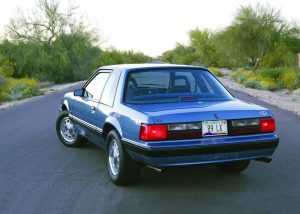
There was was also the Down Low version of the Pontiac Trans-Am, the Firebird Formula. It had the Trans-Am’s engine, but not its shaking hood scoop or the gigantic screaming chicken decal that served the same purpose as regards cops as throwing a stick at a sleeping junkyard dog while you’re trying to sneak past him.
The TRD visuals do serve a functional purpose. The front clip and road-hugging chin spoiler divert air around the car at high speed – while the wing on the trunk converts wind at high speed into downforce on the rear, improving stability at the high speeds this car is very capable of achieving.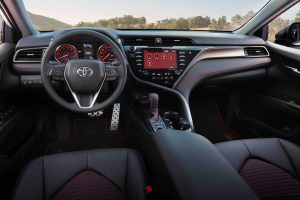
Just be careful about potholes – and low spots in the road, such as dips just before driveways.
Otherwise, this is a Camry – and so just as practical as any other Camry.
It has generous front and backseat legroom (42.1 and 38 inches, respectively) and a 15.1 cubic foot trunk. Three USB ports, including one on top of the center console that’s easy to see and plug into by feel plus two more in the center console storage cubby.
There are a few TRD trim touches inside such as the stubby gear selector knob for the six-speed automatic and red contrast stitching for the steering wheel and seats.
But nothing nearly as gaudy as what’s outside.
The Rest
One area Toyota completely overlooked is under the hood. How the engine looks. It has the same anonymous gray-black plastic cover as covers other Camry engines. Nothing dressy much less gaudy – which is a shame.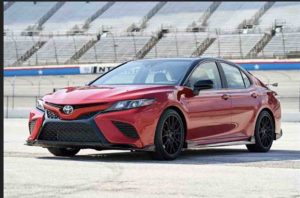
Performance packages used to almost always come with engine dress-up packages. It was part of the fun to raise the hood and look at the chrome valve covers, the open-element or dual snorkel air cleaner. The things that made it look not run-of-the-mill.
The TRD’s engine bay looks as run-of-the-mill as it gets.
The Bottom Line
The Camry always was a race winner – whether the measure was 0-60 or how many Toyota sold.
Now – except for under its hood – it looks like a race winner, too.
. . .
Got a question about cars, Libertarian politics – or anything else? Click on the “ask Eric” link and send ’em in!
If you like what you’ve found here please consider supporting EPautos.
We depend on you to keep the wheels turning!
Our donate button is here.
If you prefer not to use PayPal, our mailing address is:
EPautos
721 Hummingbird Lane SE
Copper Hill, VA 24079
PS: Get an EPautos magnet or sticker or coaster in return for a $20 or more one-time donation or a $10 or more monthly recurring donation. (Please be sure to tell us you want a magnet or sticker or coaster – and also, provide an address, so we know where to mail the thing!)
If you’d like an ear tag – custom made! – just ask and it will be delivered.
My latest eBook is also available for your favorite price – free! Click here. If that fails, email me at EPeters952@yahoo.com and I will send you a copy directly!




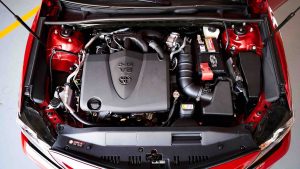

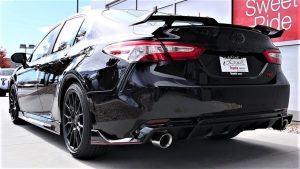
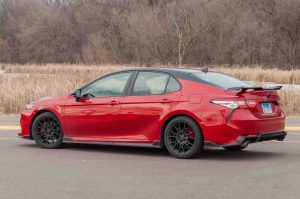








I know everyone here, including Eric, is wishing this car were more subtle, and I understand the benefits of subtlety, I absolutely do. But frankly, I’m glad this car shouts performance like this and I wish more did. It’s a source of constant annoyance to me that, just as manufacturers started moving away from the simple bodywork of the 80s, 90s, and 2000s back towards more complex panel shapes that could really use a good spray job to get people looking at them, they also started moving away from attention-grabbing primary and secondary colors in bright gloss or deep metallic finishes, and towards boring, muted metallics: burnt orange, that dull-dark-red color every car seems to come in now, and of course, endless permutations of white, silver, gray, and black. Occasionally a decent blue. But the days of being able to buy a brand new car in day-glo red or green set off with big splashy racing stripes and “GT” or “TURBO” decals are long gone – unfortunately.
3rd generation (1992-1996) Camry were available from the factory with a wing (not spoiler)
The 1994 Camry SE coupe came with the wing standard.
Hi Lou,
As Ed used to say, you are correct, sir! I’d forgotten. Thanks for reminding!
I’ve intensely disliked my 2018 Camry LE since the moment I rolled it out of the delivery bay at the dealership and the Lane Assist didn’t like how I approached the first stoplight, attempting to wrest the steering wheel out of my grip. The eight speed transmission has a weirdness that the dealers’ service insist is “normal”, and, every 3-4 months, I get a failure out of the front camera driving the saaaaaafety features which will be a $1200 part when replaced out of warranty.
I bought Toyotas for 26 years prior to the Camry. The next car will not be Toyota.
The car is history at our house soon.
Roscoe,
All new vehicles have one or more undesirable items: Auto stop/start, cylinder deactivation, direct injection, 4-cylinder engines, turbos, auto/manual trans, 8-10 speed auto transmissions, CVTs, timing belts, run-flat tires,
electronic “safety” annoyances.
Not all of them … yet.
“Not all of them…”
Names, models…
Toyota got their performance thing right with the previous Toyota RAV4 V6 4WD. Was john DeLorean with Toyota then :-)?
With 301 HP and no 4WD/AWD it seems the front wheels may be overcome with slippage and torque steer.
I agree with the rest – I’d rather have a TRD-like sleeper than an all-show-and-no-more-go package.
Hi liberty,
Thanks for bringing up torque steer;I should have brought it up – but didn’t because there isn’t any! One thing I will say about new FWD cars generally is that they have dialed torque steer out. The stability/traction control operates so fluidly it is a non-issue. Of course, it is arguably fun to smoke ’em.. and this car would be much more fun if it were RWD!
Im sure its an excellrent car, But man the no manual gets me, Can I choose my own gears? Paddles dont count. Looking at you ferrari.
Hi Mark,
Manuals are becoming as rare as the sight of an Undiapered! And both for the same reason.
I drove a Camry LE as a rental during Christmas 2018. The 2018 and after camrys are great handling cars with much improved appearance and performance than their predecessors. As for me, I would like the TRD mechanicals hidden under regular Camry skin, however, I would like to see the return of brighter, more bold looking vehicles in the sea of boring gray, silver, black and white cars roaming the freeways today. The Camry TRD might have the visual appeal to entice people to buy it. We will see.
“Now look at this one. In red — with the gloss black roof and matching chin and trunk spoiler. All it needs is a shaker hood scoop and a screaming chicken decal on its hood.” — EP
Erm, yeah. The unsubtle red-and-black paint scheme is exactly what nine-year-old me would have applied with Tester’s gloss black and candy apple red rattle cans, had the TRD Camry been available as a 1:25 AMT model then.
Toyota is trying a bit too hard, like strapping black leather gladiator gear on a chipmunk. You don’t whether to laugh, fart, or wind your watch.
Exactly the opposite would float my boat: Down Low plain-brown-wrapper exterior, with a naked-bike style exposed and polished engine hiding under the hood as a functional work of art, with big, bad individual exhaust headers coiling down into a 3-inch collector. Let’s rumble …